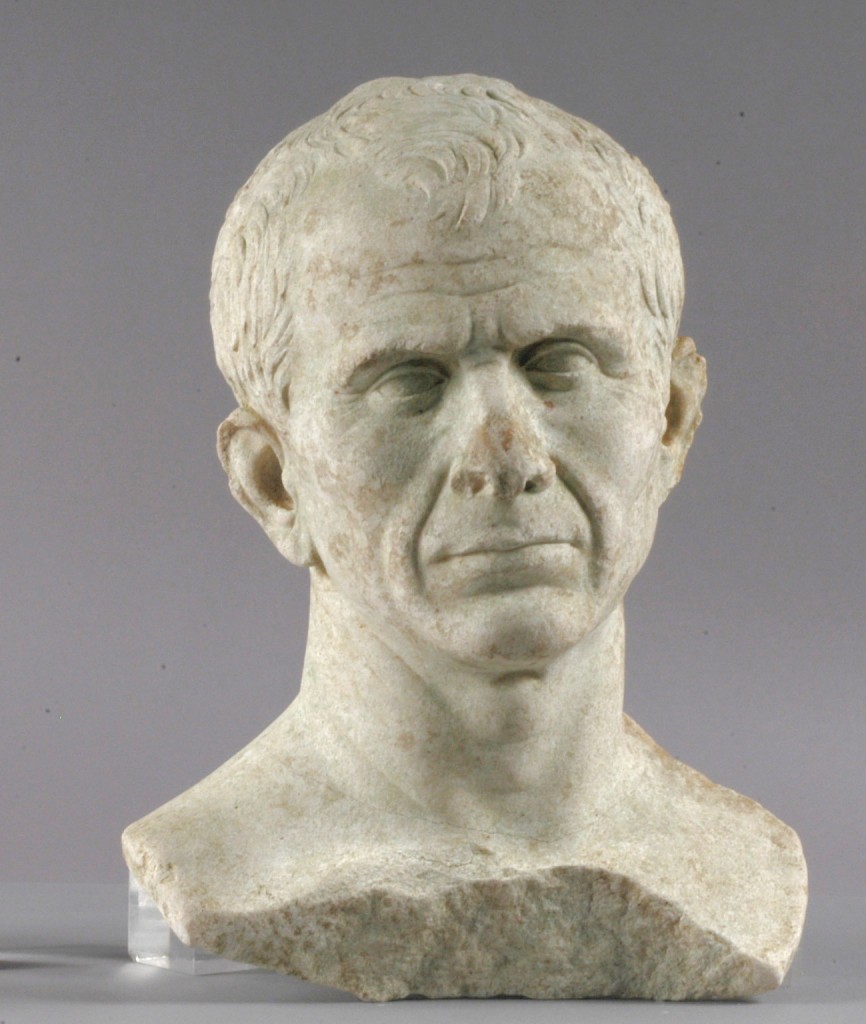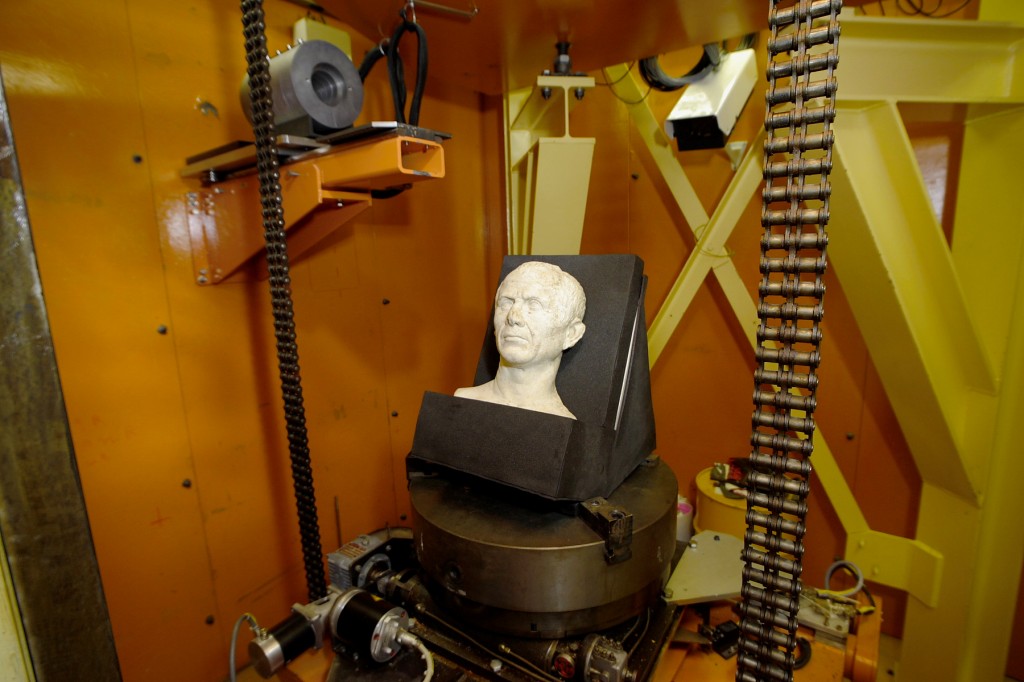ITER NEWSLINE
39
An Imperial Visit at CEA
Robert Arnoux

A unique representation of the Roman ruler, carved a couple of years before his assassination.
© C. CHARY/DRASSM

Caesar's bust, being readied for a gamma scan, © CEA
Caesar's bust, along with several other statues and artifacts, had been brought to light last October, in Arles, by a team of underwater archaeologists led by veteran chief curator and diver Luc Long. Most of their harvest had been exceptional, but Caesar's bust was unique: it is the only one of two surviving representations of the ruler, made while he was still alive. The work of art is strikingly realistic — wrinkles, expression, prominent Adam's apple and receding hairline are similar to those that appear in coins minted in the years before his assassination, in 52 BC.
The archaeologists wanted to investigate the internal structure of the marble bust, which appeared to be not of one piece. "In order to preserve this masterpiece to the best of our ability, this kind of information is of the utmost importance", says Luc Long.
Using non-intrusive gamma rays techniques usually applied to characterizing the contents of nuclear waste drums, LMN was able to obtain tomographs of the bust, clearly showing the staples holding the original part and a later addition at the back of the head. Two bronze statues, a gold-plated winged Victory and one of a slave or a prisoner, along with a delicate bronze arm, have been treated with the same techniques and have delivered equally important information.
Caesar's bust and the other statues are now back in the archaeologists' laboratories in Arles. They will star in a major exhibition at the Musee departemental de l'Arles antique late in 2009.
return to Newsline #39



